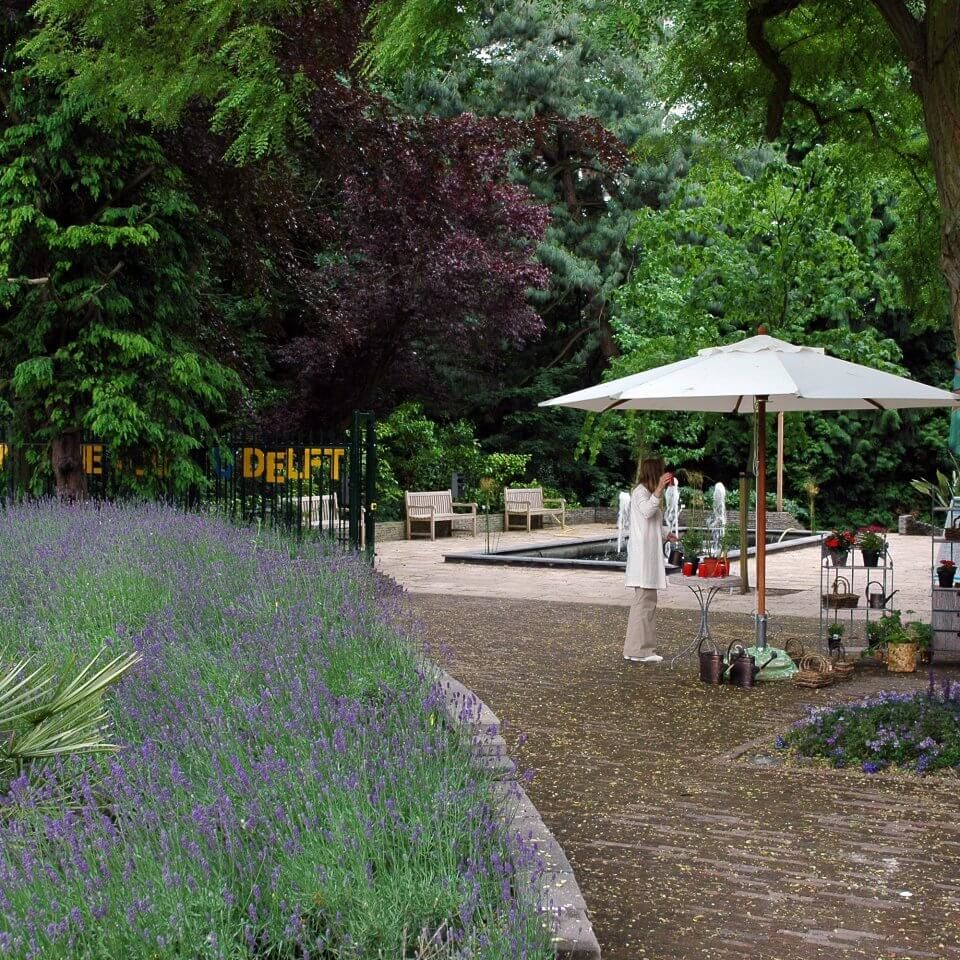
Technical Botanie - Walkingroute TU Noord
Today: Botanical Garden and the associated building, open to the public Address: Poortlandplein 6 Year of construction: 1917, Botanical Garden, founder Gerrit van Iterson Jr. 1919, Technical Botany building at Poortlandplein 35, architect J.A.W. Vrijman
Culture Garden for Technical Crops
The culture garden and greenhouses located at the rear of the building are open to the public even today. About a hundred years ago, on 14 October 1917, the botanical garden was inaugurated as a ‘Culture Garden for Technical Crops’. The garden was created at the urging of the Professor of Technical Botany Gerrit van Iterson Jr.: “If the future engineer wants to fully understand the processes that are required to obtain the so important products from the vegetable kingdom, he must be given the opportunity to study the crops that are the starting point for this, as they are offered to technology, that is to say, in most cases in living condition.” Also see: Delft School of Microbiology.
Indonesia
Fibres, latex, gums…
Culture Garden for Technical Crops
The culture garden and greenhouses located at the rear of the building are open to the public even today. About a hundred years ago, on 14 October 1917, the botanical garden was inaugurated as a ‘Culture Garden for Technical Crops’. The garden was created at the urging of the Professor of Technical Botany Gerrit van Iterson Jr.: “If the future engineer wants to fully understand the processes that are required to obtain the so important products from the vegetable kingdom, he must be given the opportunity to study the crops that are the starting point for this, as they are offered to technology, that is to say, in most cases in living condition.” Also see: Delft School of Microbiology.
Indonesia
Fibres, latex, gums, resins, wood and dyes primarily obtained from Indonesia were unknown raw materials for new products. The garden became a supplier for new Dutch industrial establishments at Delft such as the oil and peanut factory (Calvé), the Gutta Perscha (Apollo tyres) factory and the glue and yeast factory (Gist Brocades). This flourishing trade came to an end after the Second World War with the breaking of ties between the Netherlands and Indonesia.
Current Botanical Garden
The more than 8,000 plants in today’s Botanical Garden continue to be a source of new industrial developments such as the pink LED technology for multilayer cultivation and efficient plant growth in greenhouses, the ultra-fine particulate capture system for air purification, fibres for new organic composites, Vetiver grasses for embankment protection etc. Even today, the Botanical Garden serves as a source of bio-inspired technological innovations.